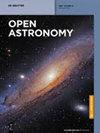Gravity assists maneuver in the problem of extension accessible landing areas on the Venus surface
IF 0.5
4区 物理与天体物理
Q4 ASTRONOMY & ASTROPHYSICS
引用次数: 4
Abstract
Abstract This study discusses the usage of Venus gravity assist in order to choose and reaching any point on Venusian surface. The launch of a spacecraft to Venus during the launch windows of 2029 to 2031 is considered for this purpose. The constraints for the method are the re-entry angle and the maximum possible overload. The primary basis of the proposed strategy is to use the gravitational field of Venus to transfer the spacecraft to an orbit resonant to the Venusian one – with the aim of expanding accessible landing areas. Results of the current research show that this strategy provides an essential increase in accessible landing areas and, moreover, may provide an access to any point on the surface of Venus with a small increase in ∆V required for launch from the Earth and in the flight duration. The comparison with the landing without using gravity assist near planet is also given.重力有助于解决金星表面可延伸着陆区域的问题
摘要:本研究讨论了金星重力辅助的使用,以便在金星表面选择和到达任何点。在2029年至2031年的发射窗口期间向金星发射一艘宇宙飞船就是为此目的考虑的。该方法的约束条件是重新进入角度和最大可能的过载。提出的策略的主要基础是利用金星的引力场将航天器转移到与金星轨道共振的轨道上,目的是扩大可到达的着陆区域。目前的研究结果表明,这一策略大大增加了可到达的着陆区域,而且,可以在从地球发射和飞行持续时间所需的∆V小幅增加的情况下,到达金星表面的任何一点。并与不使用重力辅助的近行星着陆进行了比较。
本文章由计算机程序翻译,如有差异,请以英文原文为准。
求助全文
约1分钟内获得全文
求助全文
来源期刊

Open Astronomy
Physics and Astronomy-Astronomy and Astrophysics
CiteScore
1.30
自引率
14.30%
发文量
37
审稿时长
16 weeks
期刊介绍:
The journal disseminates research in both observational and theoretical astronomy, astrophysics, solar physics, cosmology, galactic and extragalactic astronomy, high energy particles physics, planetary science, space science and astronomy-related astrobiology, presenting as well the surveys dedicated to astronomical history and education.
 求助内容:
求助内容: 应助结果提醒方式:
应助结果提醒方式:


